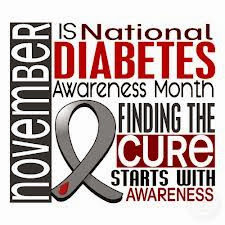What is diabetes?
There are two types of diabetes. Type 1 diabetes is an auto-immune disease, where the body attacks the insulin-producing cells in the pancreas. Type 2 diabetes is when the body either does not produce enough insulin to meet daily needs or develops resistance to the insulin produced (National Certification Board for diabetes Educators, 2016). Type 2 is the topic of this discussion.
The diagnosis:
People highest at risk of developing diabetes are those who have consistent high blood glucose levels. This can be caused by overeating, not eating nutritious meals, or drinking very heavily (alcohol has loads of carbs). Over time think of the pancreas cells “loosing” their effort to work as well, causing the body’s pancreas to decrease the ability to regulate very high blood glucose.
A blood test called a “hemoglobin A1C” provides a measurement of an individual’s average glucose level of the last 2-3 months and a fasting blood plasma glucose is tested first thing in the morning to determine this result.
According to the American Diabetes Association (ADA, 2015), a normal A1C level is less than 5.7% while a “prediabetes” diagnose is made with an A1C of >5.8%. A true “diabetic” diagnosis is made for an A1C of 6.5% or higher. A fasting blood sample that is between 100-125mg/dl is considered to be in the “prediabetes” result and anything above 126mg/dl makes a true diabetic diagnose. Keeping in mind that a normal fasting blood sample is less than 100mg/dl.
The Complications:
Patients with diabetes are at risk for developing more health issues such as: hypertension (high BP), high cholesterol, and cardiovascular disease (heart issues) that can lead to heart attack, stroke, blindness, and kidney disease (ADA, 2015).
The statistics:
The Center for Disease Control (CDC) estimates that 1 in 3 adults nationally have prediabetes; but, 9 out of 10 people are unaware they have it (CDC, 2014). The national average of type 2 diabetics (in 2014) was at 10.1% (National Certification Board for diabetes Educators, 2016). The prevalence of prediabetes did not differ between men and women but did increase with age. It is also commonly seen in Native American, hispanic, and the white american populations. Diabetes continues to be a physically, emotionally and financially devastating epidemic in the US as diabetes was the seventh leading cause of death in 2014, killing more individuals than AIDS and breast cancer combined (Wild & Sicree, 2004).
The take away:
According to definitions by NIH, primary prevention is about treating risk factors to prevent disease while, primordial prevention refers to avoiding the development of risk factors in the first place (Gillman, M. 2017). Becoming aware of health topics like diabetes can impact decisions about diet and nutrition. Nutrition is one (controlable) modifiable factor that can lessen the presentation of diabetes and the co-morbidities that come with being diabetic, like heart disease (Florida Department of Health, 2017). Making it very important to live a healthy life with well balanced meals.
A valuable resource I would like to provide is a free website developed by Dr. Michael Greger, a known author and public health speaker, known as: NutritionFacts.Org. There are several video library resources on there along with information on food and various other health related topics. Another resource is ensuring the use of “my plate” for portions control of foods as it is one way to visually see how much you are intaking in one sitting.
During my project research on diabetes, I found positive correlations to health outcomes when a strict plant based diet was followed. Although it is hard to give up meats it is much harder to cope with disabilities that can come from uncontrolled glucose levels. As data has stated eating healthy directly correlates to the impact of your health. Please be sure to check out the above website for wonderful inforamtion. It is also available in the Spanish language.
#EatWithKare

References:
American Diabetes Association. (2015). Fast Facts – Data and Statistics About Diabetes. Retrieved from http://professional.diabetes.org/content/fast-facts-data-and-statistics-about- diabetes/?loc=dorg_statistics
Centers for Disease Control and Prevention. (2014). National diabetes statistic report, 2014. Centers for Disease Control and Prevention, US Department of Health and Human Services. Retrieved from: http://www.cdc.gov/diabetes/pubs/statsreport14/national-diabetes-report-web.pdf
Colditz, G. (2018). Health Diets in Adults. Retrieved on Nov 1, 2018, from: https://www-uptodate-com.access.library.miami.edu/contents/healthy-diet-in-adults?search=plant%20based%20diet%20diabetes&source=search_result&selectedTitle=5~150&usage_type=default&display_rank=5
Florida Department of Health. (2017). Guidelines for Care and Delegation of Care for Adults with Diabetes in Florida. Guidelines for Care and Delegation of Care for Adults Living with Diabetes in Florida, from http://www.floridahealth.gov/provider-and-partner-resources/dac/_documents/dac-report-january2017.pdf
Gillman, M. (2015). Primordial prevention of cardiovascular disease.Retrieved from: https://www.ncbi.nlm.nih.gov/pmc/articles/PMC4349501/
Greger, M. (2016). Reversing Diabetes with Food. Nutrition Facts, volume 29.Retrieved from: https://nutritionfacts.org/video/reversing-diabetes-with-food/
National Certification Board for diabetes Educators. (2016). What is a CDE? Retrieved from http://www.ncbde.org/living-with-diabetes/whatisacde/
Ramal, E., Champlin, A., & Bahjri, K. (2018). Impact of a Plant-Based Diet and Support on Mitigating Type 2 Diabetes Mellitus in Latinos Living in Medically Underserved Areas. American Journal Of Health Promotion: AJHP, 32(3), 753–762. https://doi.org/10.1177/0890117117706793
Wild, S., & Sicree, R. (2004). Global Prevalence of Diabetes. Retrieved from http://care.diabetesjournals.org/content/27/5/1047.short
Wood, R. (2016). Rankings of Diabetics in South Florida. Retrieved from http://www.countyhealthrankings.org/app/florida/2015/measure/outcomes/60/data


